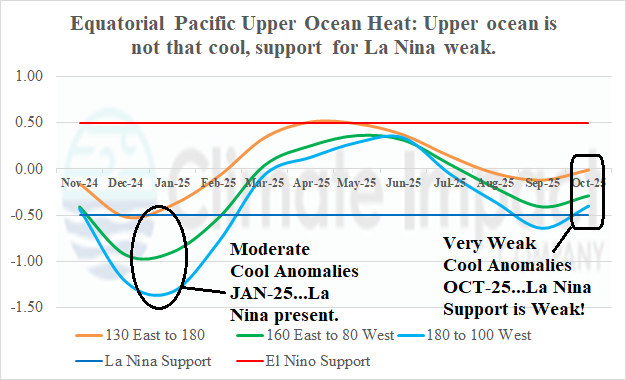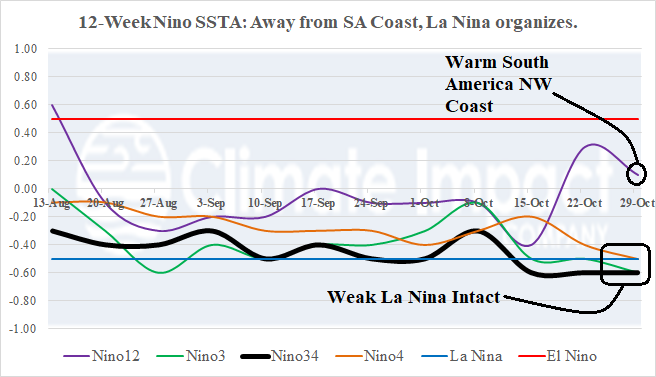
Warm Pattern Continues in North America Shifting to Seasonably Chilly in the U.S. Late November
10/31/2025, 10:03 am EDT
Recent Winter Easterly QBO and Stratospheric Warming Events
11/04/2025, 2:39 pm EST
Climate Impact Company Weekly ENSO Climate Diagnostics
Issued: Monday November 3, 2025
Highlight: Short on fuel to keep La Nina going.

Fig. 1: Monthly upper ocean heat anomalies across the equatorial Pacific.

Fig. 2: The 12-week monitor of the Nino SSTA regions indicates weak La Nina is increasingly organized.
Discussion: STRIKING is the weakening of anomalous cool waters in the equatorial East Pacific during October (Fig. 1). Note that the cool anomalies present in the subsurface equatorial Pacific are about 30% of the strength present this past January which supported a moderate strength La Nina episode. Unless upper ocean heat across the equatorial Pacific to the east of the Dateline cools dramatically over the next few weeks, the current La Nina will end. The Nino SSTA regions are slightly better organized barely within the La Nina threshold (Fig. 2). Only the Nino12 region, off the northwest coast of South America, is slightly warmer than normal. Since mid-October, the southern oscillation index (SOI) has shifted to strong positive phase caused by increasing trade winds up-welling cool water to the surface. Somewhat remarkable, is the +SOI strength and limited cooling of the Nino34 SSTA region which further emphasizes the subsurface is not sufficiently cool to strengthen La Nina. The atmosphere is trying to shift into a La Nina regime, but fuel is short!

